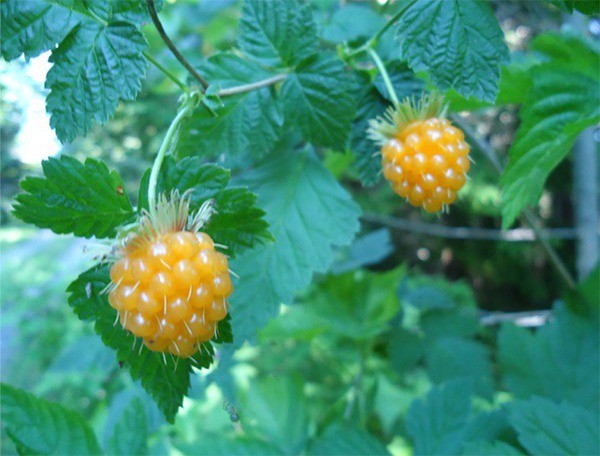The North Olympic Peninsula provides an abundance of wild edible berries. They make a perfect snack while hiking. Many taste great in preserves, pies and other dishes.
Here are tips for identifying 10 of the tastiest wild berries that grow in our area.
Trailing blackberry (Rubus ursinus) is our only native blackberry. It produces long prickly vines that trail over the ground. The berries are 1/2-inch long, deep red to shiny black, sweet and juicy.
Himalayan (Rubus discolor) and evergreen blackberries (Rubus laciniatus), both introduced species, are thicket-forming shrubs with sturdy, arching canes and stiff thorns. The leaves have five leaflets. The berries are large, black and delicious, great fresh but also in pies and preserves.
Blackcap raspberries (Rubus leucodermis) have tall arching canes with a powdery white coating. The leaves have 3-5 leaflets with white undersides. The berries, about 1/2 inch across, are initially red, becoming purple to black as they ripen. They are rich, sweet, and not overly juicy. Try them in a berry crumble.
Salmonberry (Rubus spectabilis) is a tall shrub. The leaves have three leaflets. The magenta flowers give way to soft yellow-rose tinted berries. Their taste varies from bush to bush, but some report a hint of citrus. Eat salmonberries right off the bush; they do not keep well.
Blueberries (Vaccinium sp.) can be deciduous or evergreen shrubs, depending on the species, that range in height from a few inches to 10 feet. The twigs have a characteristic zig-zag pattern and small glossy, dark green leaves. The blue-black berries, about 1/4-inch across, often have a whitish powdery coating. Wild blueberries are tasty eaten fresh, but also baked in pies or made into jam.
Red huckleberry (Vaccinium parvifolium) is an upright deciduous shrub. It often is found growing on rotting stumps with salal. The leaves are small; young twigs are bright green. The berries are salmon-egg red, about 1/4 inch across. They are tart and a great topping on fish or other meats.
Wild strawberries (Fragaria sp.) are an evergreen ground cover. They spread by runners to form low, compact mats. The leaves, a medium green on top and light green beneath, have three leaflets and large teeth. Wild strawberries are a miniature version of cultivated strawberries and slightly hairy. Eat them fresh!
Salal (Gaultheria shallon) is an evergreen shrub with dark green, lustrous leaves that are popular among florists. The blue-black berries have a tough skin and hang along a reddish stem. Some liken the flavor to an “almond-flavored blueberry.” Native Americans mixed salal and other berries with dried meat and fat to make pemmican.
Oregon grape (Mahonia sp.) is an evergreen shrub with shiny green, holly-like foliage. In spring, it sports large clusters of small golden flowers. The powdery blue fruits (arranged in grape-like clusters) are tart and improve after frost. They often are gathered for jelly or wine.
Thimbleberry is a thornless shrub that grows rapidly and forms dense thickets. The leaves are large, downy and maple-leaf shaped. The cup-shaped berries go from pink to scarlet as they ripen and often crumble as they are picked. The taste is sweet to insipid depending on the growing site.
Tips for collecting wild berries
To collect wild berries safely, follow these tips:
• Identify the berry before you pick. Eat only those that you can identify and know are edible.
• Wear protective clothing such as thick pants, a long-sleeved shirt and closed-toe shoes.
• Use sunscreen.
• Avoid heavily trafficked roadsides and areas recently sprayed with herbicides.
• Watch out for wildlife.
• Avoid damage to the berry plants and surrounding vegetation. Pick up litter and minimize your impact on the environment.
• Do not over-harvest. Leave ample fruit for reseeding and wildlife food.
• Realize, although berry collection is permitted on most public lands for personal consumption, collection is prohibited where posted and in certain settings and restrictions on quantities might apply.
Jeanette Stehr-Green is a Washington State University-certified Clallam County Master Gardener.



